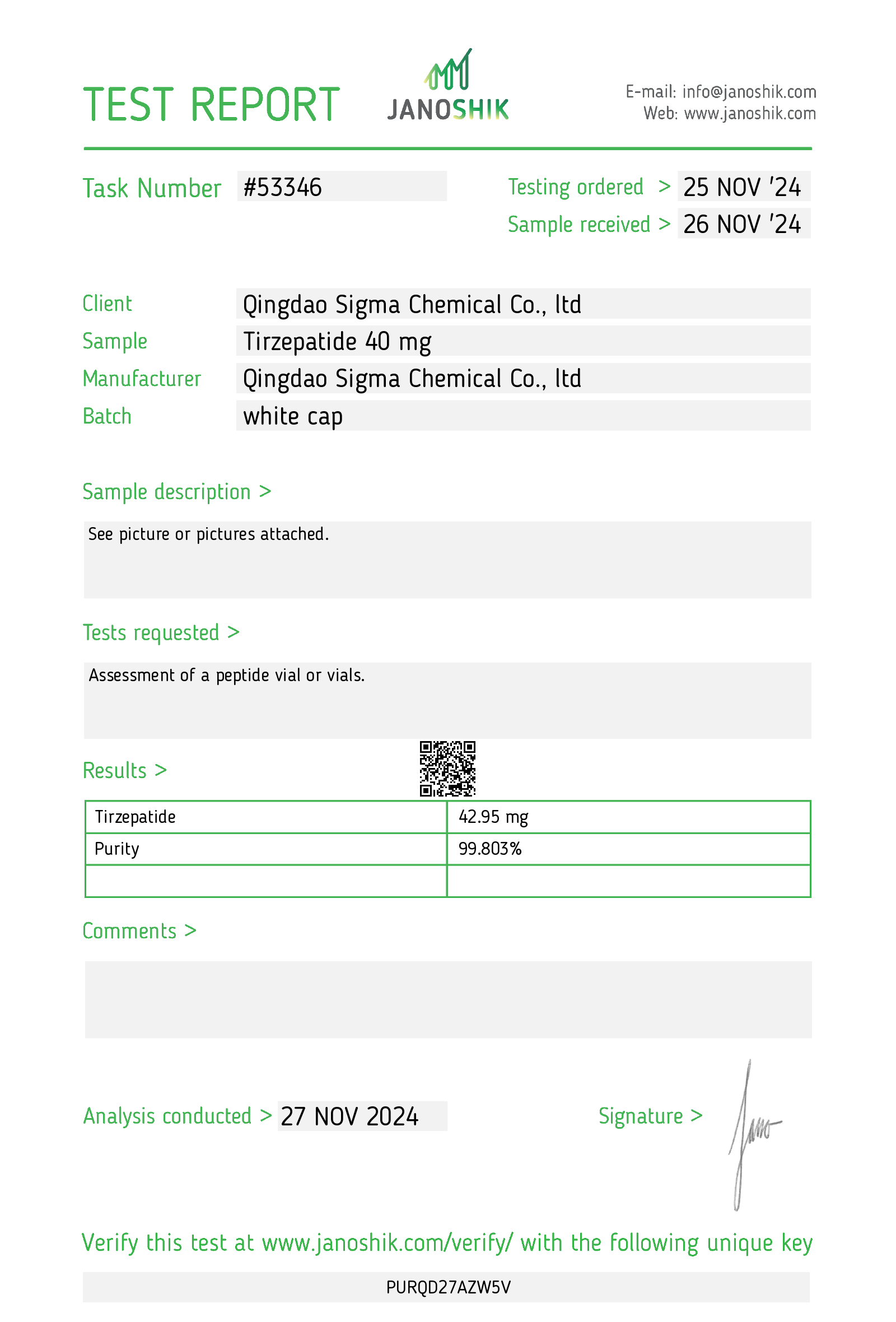Dose Calculator
Calculate precise medication doses
Important Note: This article presents research analysis only. No endorsement of testing services is implied. Always obtain medications through licensed healthcare providers.

Mass spectrometry analysis showing compound purity and molecular verification
Analysis of over 85 independent tests conducted between September and November 2024 provides unprecedented insights into quality control standards and consistency in the GLP-1 market.
* Tests conducted by independent laboratories. Results aggregated from community data.
| Test Type | Method | Acceptance Criteria | Pass Rate |
|---|---|---|---|
| Identity | MS/MS | Exact mass ±0.5 Da | 99.8% |
| Purity | HPLC-UV | >98% area | 98.2% |
| Content | HPLC-UV | 90-110% | 97.5% |
| Region | Labs | Tests/Month | Avg. Turnaround |
|---|---|---|---|
| North America | 35+ | 450-500 | 48-72h |
| Europe | 28+ | 350-400 | 72-96h |
| Asia Pacific | 22+ | 250-300 | 96-120h |
| Storage Condition | Duration | Recovery | Status |
|---|---|---|---|
| 2-8°C | 6 months | 98.5% | Pass |
| 25°C/60% RH | 1 month | 96.8% | Pass |
| 40°C/75% RH | 2 weeks | 92.4% | Monitor |
Implementation of automated sample preparation and analysis systems to improve throughput and reduce variability.
Development of centralized database systems for real-time result tracking and trend analysis.
Addition of new testing facilities and implementation of standardized protocols across regions.
Note: This article presents research data only. The information is for documentation and research purposes. Always obtain medications through legitimate healthcare providers and licensed pharmacies.